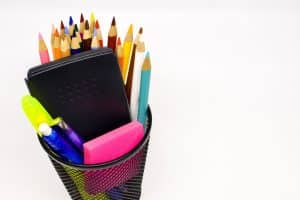Learner-Centered Tip of the Week: Anchor Charts
CompetencyWorks Blog
 This post originally appeared on Courtney Belolan’s website on October 5, 2015. Belolan is the instructional coach for RSU2 in Maine.
This post originally appeared on Courtney Belolan’s website on October 5, 2015. Belolan is the instructional coach for RSU2 in Maine.
A major goal of learner-centered proficiency based learning is to foster independence in our students. An excellent classroom tool for supporting this work is an anchor chart. Anchor charts are posters that make processes, cues, strategies, and guidelines visible to students. As students are internalizing and learning these, the chart serves as the reference text. Many people already use flow-charts and s.o.p.s in their rooms. Some people have reading and writing charts up. Other people have group work charts, and problem solving charts. All of these fall under the broader category of anchor charts.
Like anything, some anchor charts are stronger than others. Here are some basic tips for creating and using quality charts in your classroom:
When To Make A Chart
- To support routines and procedures such as the process for leaving the room, turning in homework, getting help during class, getting ready for the day, putting away materials, how to get the teacher’s attention, etc.
- To support specific procedures or that students will use over time, like operating a microscope or initial troubleshooting with a computer or other device.
- To support complex skills, such as working in a group, solving a problem, reading, and writing
- To support the application of content that does not need to be memorized, like the periodic table, a timeline of dynasties in China, formulas, and editing marks
How To Use Charts In The Classroom
- Designate a spot for each different category of charts. For example, a place for social skills charts, a place for reading charts, etc. This makes it easier for your students to use the charts as a resource.
- Keep charts up when students still need them, take them down when students no longer need them. If your students no longer need the chart to help them remember how to ask to leave the room, take it down. Likewise with unit specific charts.
- Make a past chart reference file and make it available to students. Take pictures of charts and put them in a binder, or on a website. When a new student comes in, or if individual kids need the chart again, they can get it.
- Only make essential charts. There is a balance you need to strike between too many and too few charts, go too far in either direction and the charts are no longer effective
- Make them with students, as you plan to use them. Because anchor charts are supposed to support the learners in your room, there is very likely that last year’s chart won’t be the best chart for this year’s students.
- Train your student to use the charts. When they ask a question that has a corresponding chart, point to it or direct the student to it rather than answer.
How To Make A Quality Chart
- Think of the chart as a collection of tips, how-to’s, and big thinking for a chunk of learning, not just something that supports one lesson.
- Keep it simple: simple titles, simple images, simple organization
- Use colors, writing,and space strategically
Before you run off with this idea, a bit of a warning: beware of pinterest! Remember that the point of an achor chart is to support self-regulation and independence in your learners. How pretty or perfect a chart is does not matter! Use the anchor chart examples you find as inspiration. I’ve started a board on pinterest of examples of great charts for various grades and contents to help!
See also:
- Learner-Centered Tip of the Week: Deadlines and Redos
- Engagement Templates: 6 Ways to Structure Learning Experiences
- The SAMR Model in Blended Learning
Courtney Belolan works at RSU 2 in Maine where she supports K-12 teachers with performance-based, individualized learning. Courtney works closely with teams and teachers as a coach, and with the school and district leadership teams as an instructional strategist. Courtney has worked as a 6-12 literacy and instructional coach, a middle level ELA teacher, an environmental educator, and a digital literacy coach. Her core beliefs include the idea that the best education is one centered on student passions and rooted in interdisciplinary applications, and that enjoying learning is just as important as the learning itself.